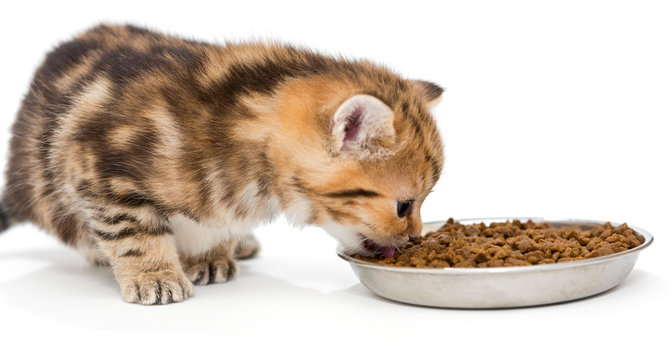People who adopt kittens naturally hope they will grow into healthy adult cats. However, without the proper nutrition, a kitten might not grow as it should. Here are some tips to help your kitten become a good eater and avoid unexpected health issues!
1) Provide a Complete Diet
Not all types of kitten food are complete. A complete food is one that contains all the nutrients it needs. In other words, it has a good balance of vitamins, minerals, protein, carbohydrates, and fats. A supplemental food is one that does not contain all the necessary nutrients.
Growing kittens need to get the right amount of nutrition, and by law, pet food packages must indicate whether it is a “complete diet” or a “complementary diet.
For kittens, a food with raw meat is often a complementary food. For instance, turkey and chicken is a complete food with excellent digestion and absorption, making them very healthy and tasty for kittens.
2) Weigh and Feed a Measured Amount of Kitten Food per Day
Kittens should not be fed an unlimited amount of kitten food. It is better to weigh the food needed for the kitten and spread it out over the day. This will reduce the risk of being overweight, which can lead to various health problems.
3) Pay Attention to the Quality of Food and Water Bowls
Not all food and water bowls are suitable for cats. Food and water bowls that are too high are not good for kittens. Kittens’ whiskers are sensitive and may touch the box. Therefore, choose a low, wide box that is easy for kittens to reach. Also, some kittens do not like plastic water containers because the water tastes different.
Tip: Cats are very picky drinkers. Therefore, it is essential to place several water troughs in the house. This way, kittens will always have easy access to water. An unobstructed water fountain will also help kittens drink more water.
4) Dietary Changes
Like us humans, kittens do not like eating the same foods repeatedly. Even in nature, cats do not always eat the same foods. Variation is very healthy, as it wakes up the kitten’s immune system, prevents the development of intolerances and allergies, and keeps them from becoming bored with one taste. Giving kittens a variety of flavors early in life will help them eat better.

5) Offer Kitten Food at Room Temperature
Kitten food should be neither too hot nor too cold. For example, do you offer food from the freezer or refrigerator? Then you must first bring the kitten food to room temperature. If the food is too cold, it can be hard on the kitten’s intestines and stomach. If the kitten’s food is heated, it is crucial to allow it to cool to room temperature before feeding. Otherwise, they may burn their tongue.
6) Supplement Dry Food With Wet Food
Wet food is an essential part of your kitten’s diet. They are rich in water, which helps keep your cat stay hydrated. This is important for body cleansing and proper kidney and bladder function. If you are mixing kitten kibble with wet food, you also provide a wide range of essential nutrients, including different protein sources. This way, you can also reduce the likelihood that your kitten will develop an intolerance to specific protein sources.
7) Gradual Introduction of New Foods
Kitten food is usually easy to digest because of its high meat and fish content. Therefore, problems rarely occur when switching foods! However, it is a good idea to introduce new foods gradually to your kitten. This way, the kitten’s intestines and stomach are not overloaded, and the risk of diarrhea is reduced. For a gradual transition, the following scheme can be followed:
• On the first day, feed 75% of the existing food and 25% of the new food in one meal;
• On the second day, feed 50% of the existing food and 50% of the new food;
• On the third day, feed 25% of the existing food and 75% of the new food;
• On the fourth day, only the new food should be fed

Let us know if these few tips have helped you in the comments below!